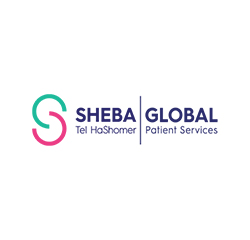
Acute Lymphoblastic Leukemia (ALL) – Sheba Medical Center
Acute lymphoblastic leukemia occurs when a mutation changes bone marrow cells and causes them to continue growing and dividing unchecked. They typically develop at a certain rate and die off at certain intervals. The bone marrow creates immature cells known as myeloblasts, which mature into white blood cells. Leukemia is the result of this blood cell production becoming excessive and generating abnormal cells. These aberrant cells can accumulate and drive out healthy cells since they cannot function normally.
ALL is a fast-growing, aggressive kind of blood and bone marrow cancer that can strike anyone at any age, though it tends to affect kids more frequently. Every year, roughly 1,000 new cases of adult ALL are identified in the US.
Unlike many other cancers, acute lymphoblastic leukemia does not generally form tumors. Generally, it affects the body’s entire bone marrow and by the time it is discovered, it has spread to other organs. Therefore, ALL cannot be staged in the same manner as other cancers. Instead, ALL is classified primarily by the types of lymphocytes that are affected.
The type of ALL will dictate the approach doctors take to treat the malignancy.
Acute lymphoblastic leukemia can be classified into two main subtypes based on what subset of lymphocytes (white blood cells) it attacks.
B-cell ALL, accounting for about 85% of all cases, affects B lymphocytes that develop in the bone marrow. B lymphocytes have a major role in antibody creation and fighting off illnesses.
T-cell ALL attacks T lymphocytes. Unlike B lymphocytes, which mature in the bone marrow, T lymphocytes mature in the thymus (part of the lymphatic system). This is the less common type of ALL, accounting for about 15% of cases.

New Study Reveals Connection Between Teen Obesity and Kidney Disease


Does multiple myeloma affect the eyes?

Does multiple myeloma cause anemia?

CLL and Nutrition: A Comprehensive Guide
When it comes to battling chronic lymphocytic leukemia (CLL), the food on your plate can be one of your strongest allies. Think of proper nutrition as a silent partner in your treatment plan—a powerful force that enhances your overall wellbeing, helps manage unpleasant treatment side effects, and potentially raises your quality of life during this challenging journey. Treatments for CLL, such as chemotherapy and targeted therapies, often bring along debilitating symptoms like nausea, fatigue, and weight loss. An optimized diet can offer some relief by providing your body the vital nutrients it needs to cope. Furthermore, a balanced intake of antioxidants, vitamins and essential minerals strengthens your immune system; a critical consideration given the immunocompromised state that CLL often induces. In essence, while good nutrition won’t replace medical treatments, it adds another layer of support, making the CLL journey more manageable and potentially more comfortable.

Why is LDH elevated in dysgerminoma?


